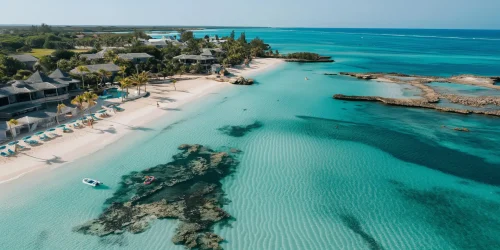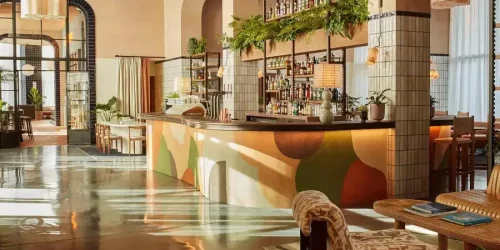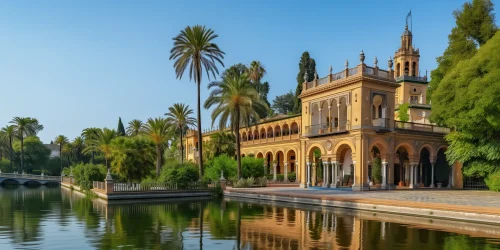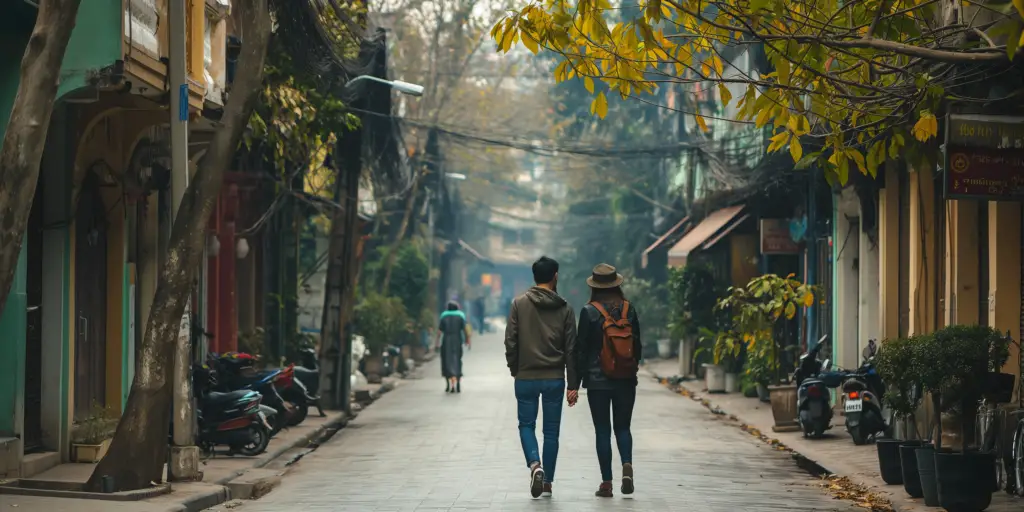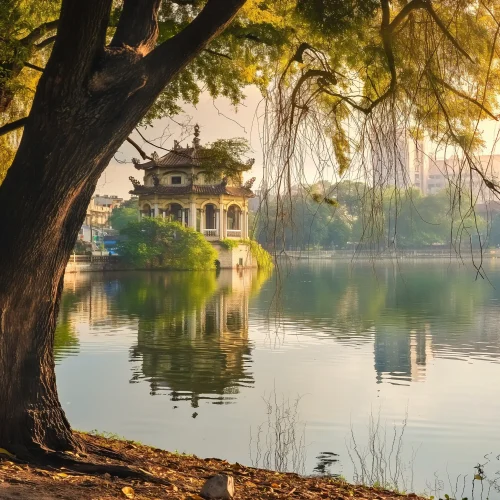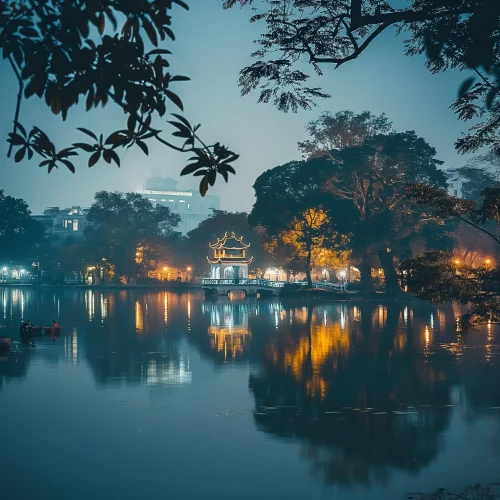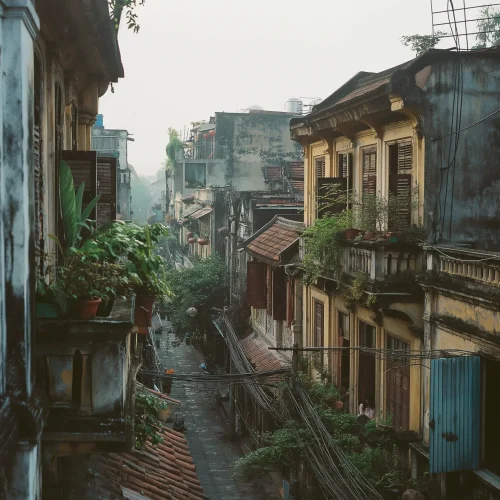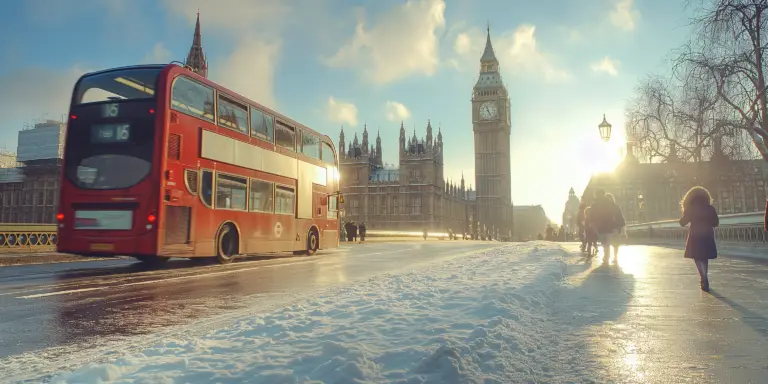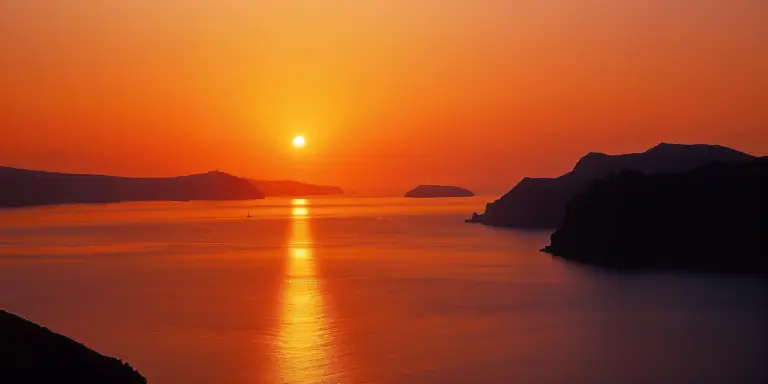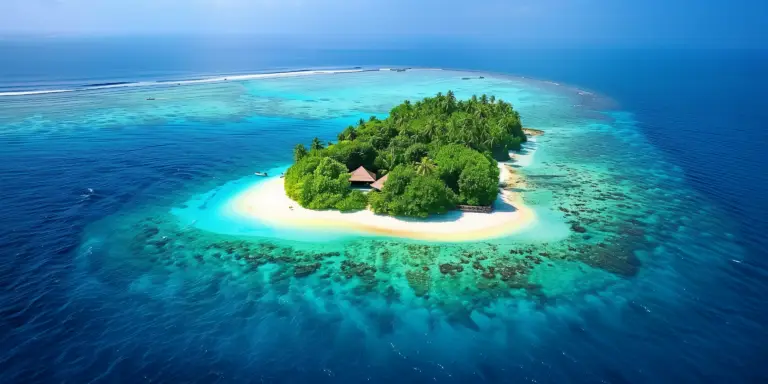A Journey Through Hanoi: History, Culture, and Culinary Delights
Imagine stepping into a city where the past seamlessly blends with the present, where every street tells a story, and every corner hides a secret. Hanoi, the capital of Vietnam, offers just that—a vibrant tapestry of history, culture, and flavors waiting to be discovered. Join me on a two-day adventure through this captivating city, as we explore its iconic landmarks, indulge in its culinary treasures, and immerse ourselves in the local way of life.
Day 1: Embracing Hanoi’s History and Culture
Our journey begins at the crack of dawn with a serene walk around Hoan Kiem Lake. As the mist rises from the water, locals gather for their morning exercises, creating a peaceful, almost meditative atmosphere. The lake is more than just a picturesque spot; it’s the heart of Hanoi, both geographically and culturally. We cross the iconic red bridge to Ngoc Son Temple, nestled on Jade Island. The temple’s tranquility and the legend of the giant turtle are just the beginning of our deep dive into Hanoi’s rich history.
From the lake, we venture into the bustling Old Quarter of Hanoi. Here, the narrow streets are a hive of activity, each named after the goods that were traditionally sold there. We wander through Hang Gai Street, where silk products glisten in shop windows, and Hang Bac Street, known for its intricate silver jewelry. The air is filled with the scent of street food and the sound of haggling, a sensory overload that’s both exciting and overwhelming.
By midday, we find ourselves at the Temple of Literature, Vietnam’s first national university, founded in 1070. Walking through the courtyards, lined with ancient stelae, we can almost hear the echoes of scholars from centuries past. It’s a beautiful, serene place, offering a stark contrast to the bustling streets we just left.
Hungry from our morning adventures, we head to Pho Bat Dan for lunch. There’s no better place to try Vietnam’s beloved noodle soup, Pho. The broth is rich and fragrant, the noodles perfectly tender, and the experience of eating at this local favorite is as authentic as it gets.
In the afternoon, we visit the Hoa Lo Prison, a site that offers a sobering glimpse into Vietnam’s tumultuous history. The exhibits here are powerful, telling the story of the Vietnamese struggle for independence and the experiences of American prisoners during the Vietnam War.
Our next stop is the elegant French Quarter, where wide boulevards are lined with colonial architecture. We marvel at the grandeur of the Hanoi Opera House and the gothic beauty of St. Joseph’s Cathedral. This area feels like a different world, a testament to the city’s layered history.
As the sun sets, we make our way to the Thang Long Water Puppet Theatre for a traditional Water Puppet Show. This ancient art form, with its intricate puppets and lively music, brings Vietnamese folklore to life in a way that’s both enchanting and entertaining.
We end our first day with a delicious dinner at Quan An Ngon. The restaurant’s charming setting and extensive menu of authentic Vietnamese dishes provide the perfect end to a day filled with cultural discoveries.
Day 2: Exploring Modern Hanoi and Local Life
Our second day begins with a visit to the Ho Chi Minh Mausoleum, where the embalmed body of Vietnam’s revered leader lies in state. It’s a solemn place, but also one of great national pride, reflecting the deep respect the Vietnamese people have for Uncle Ho.
Nearby, the One Pillar Pagoda stands as a symbol of Hanoi’s Buddhist heritage. Built in 1049, its unique design, perched on a single stone pillar, represents a lotus blossom rising from the water—a symbol of purity and enlightenment.
Next, we head to the Vietnam Museum of Ethnology. Here, we explore the diverse cultures of Vietnam’s 54 ethnic groups. The museum’s extensive collection of artifacts and reconstructions of traditional village houses provide a fascinating glimpse into the country’s ethnic diversity.
For lunch, we visit Bun Cha Huong Lien, famously patronized by Barack Obama and Anthony Bourdain. The Bun Cha—grilled pork served with noodles and fresh herbs—is a dish that captures the essence of Hanoi’s culinary scene.
In the afternoon, we find respite at West Lake (Ho Tay), Hanoi’s largest lake. Renting a bike, we leisurely cycle along the scenic lakeside paths, soaking in the tranquil atmosphere. The lake is dotted with pagodas and temples, each offering a peaceful escape from the city’s hustle and bustle.
One such pagoda is the Tran Quoc Pagoda, the oldest in Hanoi, dating back to the 6th century. Its picturesque setting on a small island in West Lake makes it a perfect spot for reflection and photography.
As evening approaches, we return to the Old Quarter for the lively Hanoi Night Market. The market is a sensory explosion of colors, sounds, and smells. We dive into the street food scene, sampling local favorites like Banh Mi, Nem Ran (spring rolls), and Che (sweet dessert soup). For a true culinary adventure, we join a street food tour, tasting a variety of dishes and learning about the stories behind them.
Conclusion
Our two days in Hanoi have been a whirlwind of history, culture, and culinary delights. From the serene beauty of Hoan Kiem Lake to the bustling energy of the Old Quarter, from the solemnity of the Ho Chi Minh Mausoleum to the vibrant street food scene, Hanoi offers a rich tapestry of experiences that have left us enchanted and eager to return. Safe travels, fellow adventurers, and may your journey through Hanoi be as magical as ours.
